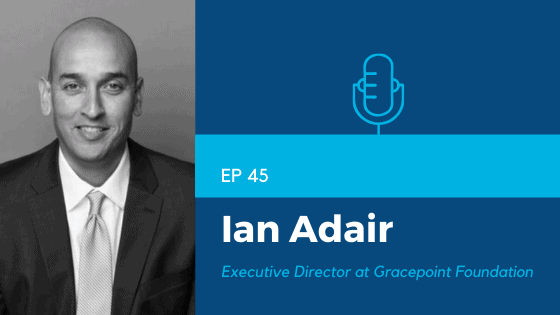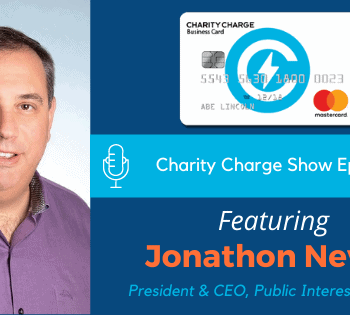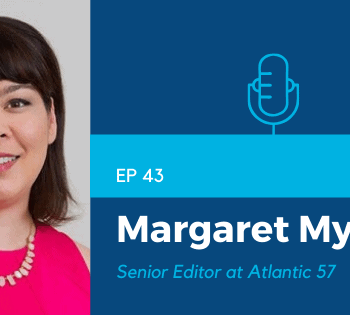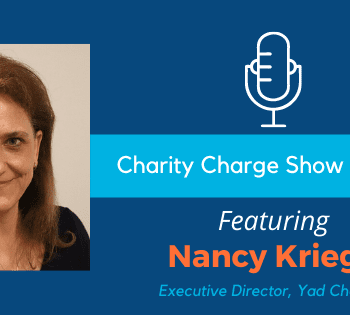Can you share with the audience a bit of your background and a few of the different organizations that you’ve run?
The Gracepoint Foundation is my third nonprofit organization that I’ve been able to lead. My first endeavor was about 15 years ago at a Boys and Girls Club organization in Wichita, Kansas, which was a lot of fun. The second opportunity I had was running the Edgar Martinez Foundation in Seattle, Washington. Working for a hall of fame baseball player was a really unique experience, but to work for somebody that cared so greatly about equity, education, and teacher diversity really did a lot for the school districts in the state of Washington. We did a lot of great work and I’m super proud of all the things that we accomplished. So, I think really those two experiences were able to kind of give me a foundation of nonprofit management and leadership. Each time you get the opportunity, you learn a lot of things that you wish you would’ve known from the previous one. So that being said, led me three years ago to Gracepoint. Actually today is my three year anniversary and it’s been an amazing three years. I never thought I would come back to lead an organization unless I truly had a personal connection to the mission. Gracepoint is the largest behavioral health organization in West Florida. We serve roughly 30,000 plus individuals through a number of means, whether it’s mental health, substance abuse services, homeless services, a lot of case management. So we’re doing some amazing work in our community with a number of different populations. I have always been very open about the mental health challenges that my family, myself included, have had to deal with. So, I had a strong personal connection to what we do and was excited to take on this role knowing I’ve had those other two opportunities to learn from past mistakes.
In your opinion, what makes a board of directors effective?
I think one thing would be sweat equity. What are they willing to do? Are they willing to open their Rolodex and raise awareness and continually keep the organization top of mind? It really comes down to a couple of things. And like I said, having the opportunity to lead three organizations. I’ve learned a lot of lessons, but I think it starts with board recruitment and expectations. I think that’s sometimes where a lot of groups really kind of have a big miss in wanting to recruit somebody that they value. Whether it’s somebody influential in the community or somebody who has industry ties. We want to only give them the rosy picture. We only want to give them the highlights. I think we back off a little bit from saying, “Oh, and after all of that we want you to also understand there’s a meeting commitment, an engagement commitment to come to events, a fundraising commitment, and a fundraising minimum.”
So we’re actually discovering that the more transparent you are, the more upfront you are, the more likely you’re going to find the right person. So it starts with setting the right expectations. It’s also so important to continually educate your board on how to be the best board member. But there is no class. You figure this out as you go. It really is the definition of on the job training. Now, yeah, there are things available, but you usually don’t find out about those things unless someone in your organization forwards it to you. We have to really take charge of educating our board on what’s going on in the sector as well as best practices. So it comes down, really comes down to onboarding, understanding and setting the right expectations, and continually educating your board on how to be the best they can be. I really don’t know too many board members that want to be brought onto a board to not be productive or to not add value to the organization.
Can you give some insight on the scope of mental illness and how many people are affected by it in some way?
Anytime I’m in a room, whether it’s 50 people or 1500 people, I always ask the question, “Who in this room has been impacted by mental health, suicide, or substance abuse either with yourself, your family, or your inner circle?” And 97- 98% of the people in the room stand up or raise their hand. So, to say one in five really doesn’t do this issue the justice that it needs, because we’re all impacted by it. You hear alarming statistics that:
- Suicide is the number two cause of death for 10 year olds to 34 year olds
- Suicide is the number four cause of death in 34 to 54 year olds
- Suicide is the number eight cause of death for 55 year olds on up
That’s alarming because we’re not talking about it. We hear statistics that veterans are dying by suicide every 18 to 22 seconds. That’s incredibly alarming. We’ve lost more veterans to suicide than we had in Vietnam. So these are things that I think are finally getting the attention they deserve.
It’s unfortunate that mental health and substance abuse are becoming trending topics on social media because of negative things like high profile suicides, celebrities overdosing, and mass shootings. It’s been researched and documented that only 4% of violent crime is committed by someone with a diagnosed mental illness.
“It is so important to understand the power of stigma because stigma is what prevents us from getting help.”
The research shows that if we’re having negative thoughts or suicide ideation, it takes on average 8 to 10 years to get help. I think when we start having negative thoughts we’re scared of losing the three things that are most important in our life: our family, our friends, and our jobs. So who are we going to disclose to? And there is real fear. So we have to address stigma. We have to do it in a way that makes employees who are either suffering from mental illness, managing recovery, or dealing with a suicide not wait to get help by removing stigma and any financial barriers.
Why do you think it is so hard for people to ask for help?
How often have you ever heard, ‘It’s okay to worry, it’s okay to be uncertain about the future…It’s okay to not get out of bed…It’s okay to cry?’ That’s not something we’re taught. We’re always taught to fall down, get up, shake it off, and man up. So when you start looking at some of the things that we’re talking about for the workplace and how you can make your employees realize that it’s safe for them to discuss and address mental health related issues…that’s a minimum. It makes you feel safe. I’m lucky that I work in a behavioral health organization. It would be a huge brick wall of irony if I didn’t feel safe to publicly disclose that I’ve been battling depression for 25 years and that I grew up in a household with abuse and drug abuse. I feel safe disclosing because I’m in a safe environment, but not everybody feels that way.
“You have to be able to make your employees feel safe and then take the time to educate employees about mental health.”
A lot of people say, we don’t have money to bring in a therapist or psychologist. And I’m like, yeah, but you have a calendar and that calendar, it has very specific days on it that let you bring up mental health. We have Mental Health Awareness month coming up next month in May, Minority Mental Health Awareness month coming up in July, suicide awareness month coming up in September, and World Mental Health Day on October 10th. So there are a lot of calendar dates that we can use to bring that awareness about.
What is the best way for people to connect with you or find additional info on Gracepoint?
I’m happy to engage with anybody. You know, the more I write articles or do webinars, I stay in contact with people that are having their own issues. And I’m happy to be a sounding board for how you can deal with them. So it’s just my first name, middle initial, last name, Ian M Adair on Twitter and Instagram. We also put a lot of really good things out on the Gracepoint Foundation Instagram as well. I know people have found a lot of value in that, so that’s just Gracepoint FDN We’ve put a lot of great stuff out there to help people like infographics on how you can help somebody that’s just disclosed that they have a mental health condition. We also try to explain and break down things as simply as possible for people wanting to learn more. And that’s the best way to get information about the foundation as well as connect with me.





